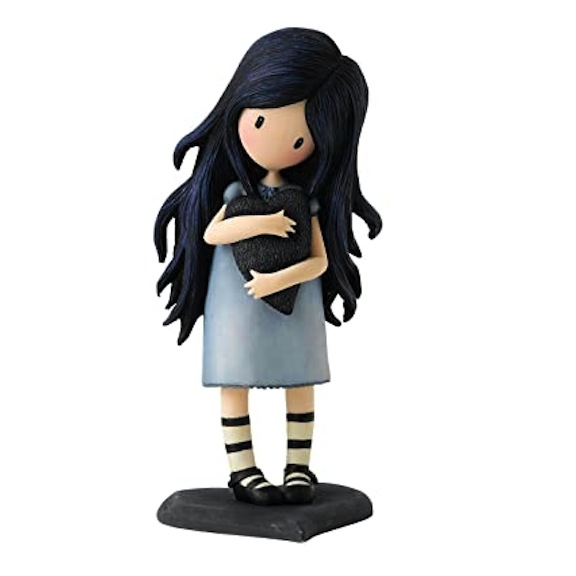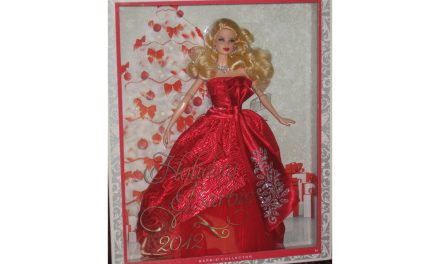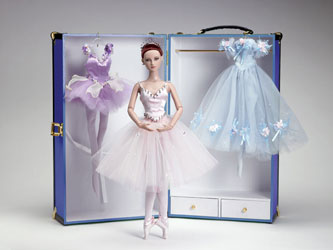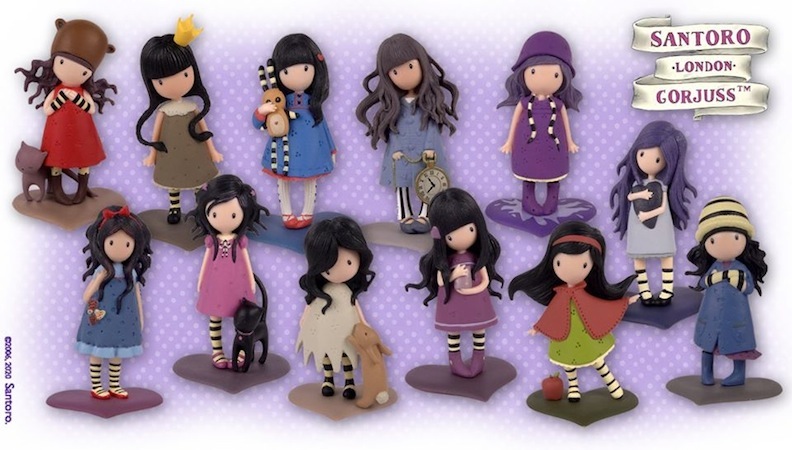
During these bizarre and uncertain times, it’s important to discover items that make you feel happy and at peace. The doll world is full of personalities and creations that emanate joy and hope, inspiration and optimism. One artist, who may not be a household name in America, designs characters that are sweet and shy, wholesome and whimsical. Her name is Suzanne Woolcott and she is the talented hands behind the Gorjuss Girls. Her paintings, which have been licensed by Santoro and turned into dolls by a variety of manufacturers, capture young girls who look like dark-haired versions of Alice in Wonderland or Pippi Longstocking. With long tresses and striped leggings, they embody a purity of childhood, but with a twist.
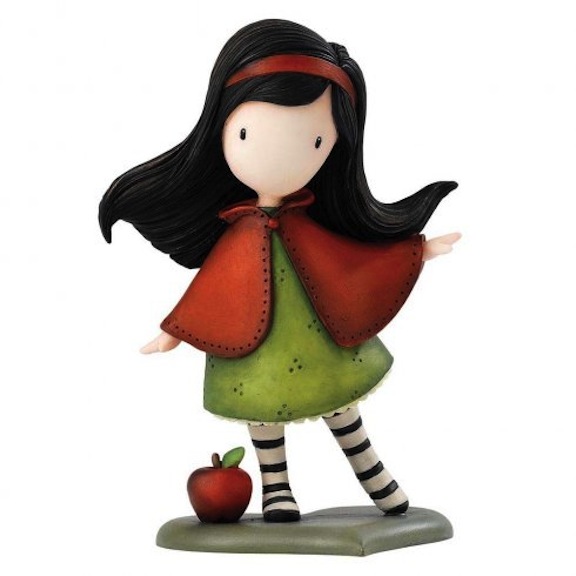
The Gorjuss Girls and their doll versions are all defined by having noticeably thick bangs, homespun clothing, dark eyes, and no noses or mouths. Yes, that’s true. Woolcott’s creations don’t have a nose or a recognizable expression. However, due to their posture and their accessories, they emanate goodness and kindness. Since 2016, the Gorjuss Girl dolls have been inviting their owners to imagine what they are saying, feeling, thinking, and doing. For four years, these three-dimensional doll renderings are an invitation to fill in the blanks. During this year, 2020, new miniature figures have joined the gorgeous ranks. They’re smaller in stature, but just as big in cuteness and sweetness.
The girls, and their doll versions, cuddle with teddy bears, hug bunnies, and frolic with cats. They hold balloons, cuddle jars filled with fireflies, and tug on heartstrings. (Yep, they literally hold hearts that have strings attached to their hands.) They invite the viewer to impose their own impressions upon their faces. The dolls always elicit good wishes, concern for one’s neighbors, and kindness to people everywhere. These are sentiments that are definitely needed during a time hallmarked by a pandemic.
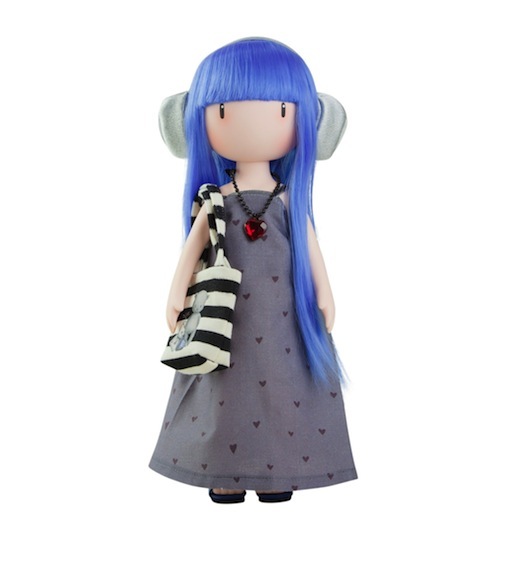
Woolcott knows a thing or two about caring and sharing. She encourages her fans to write to her (Gorjuss Art, PO Box 5614, Glasgow, Scotland G77 9EE) and she keeps her Instagram and Facebook pages as up to date as she can. Many of her collectors go beyond buying her goods. They tattoo their favorite Gorjuss Girls onto their arms, legs, and torsos. Woolcott occasionally hosts a Tattoo Tuesday on her sites, where she showcases videos and photos of these diehard devotees.
One of the reasons why the artist can’t keep up with her social media as quickly as she’d like is that she has become wheelchair-bound. The prolific artist is no longer able to walk, but she does not view this limitation as a disability. She has vowed that she will “try to work out how to keep working. I’m grateful for my fans’ patience and support through this very difficult time.” Through perseverance and persistence, Woolcott is continuing to paint and conjure up more of her instantly recognizable characters. She is in constant contact with the Santoro folks located in England and gives them feedback on their licensing arrangements. Her girls have been transformed into dolls, handbags and backpacks, clothing, home décor, stationery, and so many other knickknacks. She understands why her work has touched a chord among collectors.
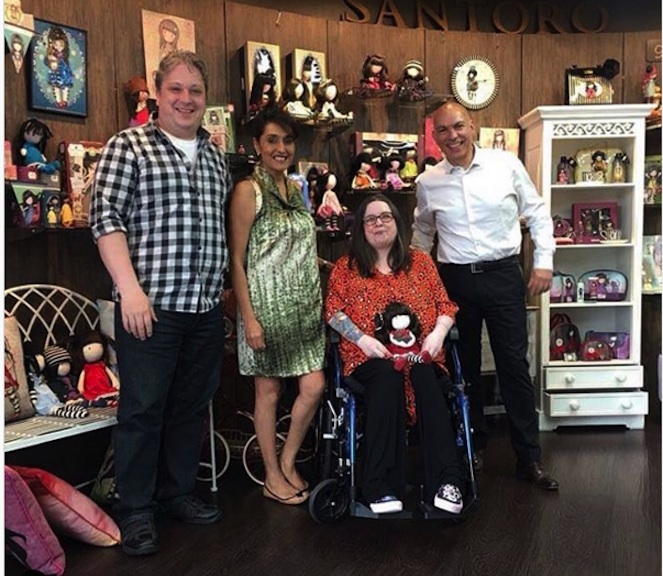
“Gorjuss is about bringing beautiful, emotional art into everyone’s lives. I love to play with words, especially taking things literally, but I also think that love runs deep within all my art,” she said recently. “I choose to paint only girls, as I can only paint what I’ve felt, experienced, and imagined. I couldn’t put so much emotion into something I haven’t felt myself.”
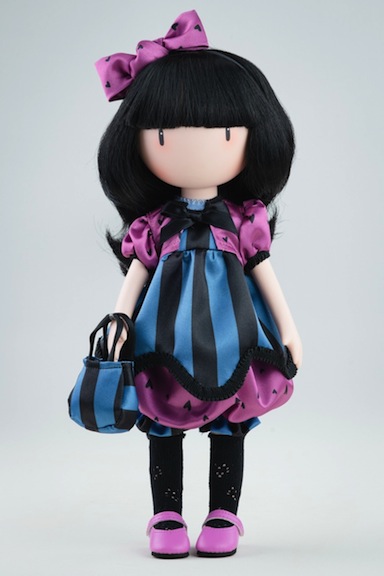
When Woolcott is asked to define the purpose of her artwork, she is quick to explain: “I always wanted to show my emotions, and to do that, you have to concentrate on what makes the viewer feel emotion.” Acknowledging that her Gorjuss Girls and their doll counterparts don’t have cheerful grins or jubilant smiles, she points out that facial expressions aren’t needed. “It can be shown with the clothing, with how they pose, with what they hold. My artwork shows that the facial expression isn’t necessary for emotion. There are other components, and I have been able to find those!”
Woolcott’s actual biography is inspirational and can elevate people when they begin to feel sorry for themselves and surrender to despair or depression. She is not letting her compromised health define her or limit her. Married to her supportive husband, whom her fans call “Mr. Grant,” and a mother to three children, she has had a rich, productive private and professional life. She has always elevated her pet cat to a charming and charismatic cohort. She puts photos of her feline friend up on Facebook and Instagram, and these images net tons of responses.
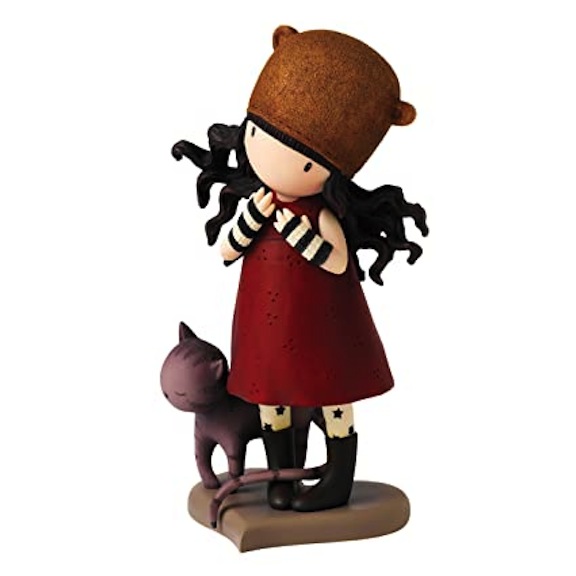
That’s one of the best parts of Woolcott’s world. She loves to know how people are reacting to her posts and to her pieces. She loves putting up photos of her newest dolls, and she admits to being a fan of what her licensing company has been able to do. It has allowed her to enjoy a life of artistry and imagination that has taken her all over the world.
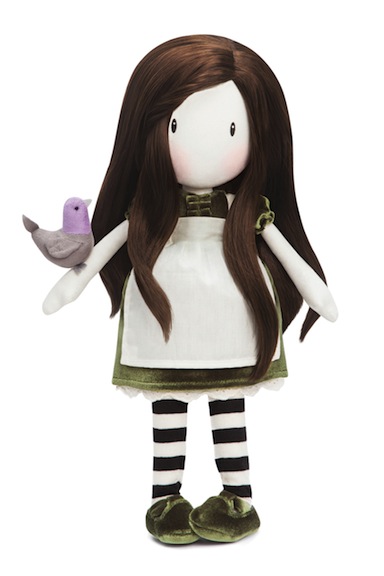
Recently, she was slated to visit the Santoro company’s London address, but her travel plans were curtailed due to the COVID-19 virus. She posted on Instagram letting everyone know that she is healthy and happy, and wishing that all her followers remain the same, too. In her Scottish studio, she will continue to paint and experiment, communicate with collectors and follow the news. She still will carve out time to pretend and dream about fanciful, whimsical alter egos.

Channeling one of her Gorjuss Girl designs, Suzanne Woolcott sincerely writes: “I hope one day my hair will be long enough to give Rapunzel a run for her money, and I’ll be able to keep a raindrop as a pet. I’ll feed it rainbows, of course!”

